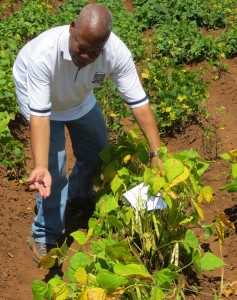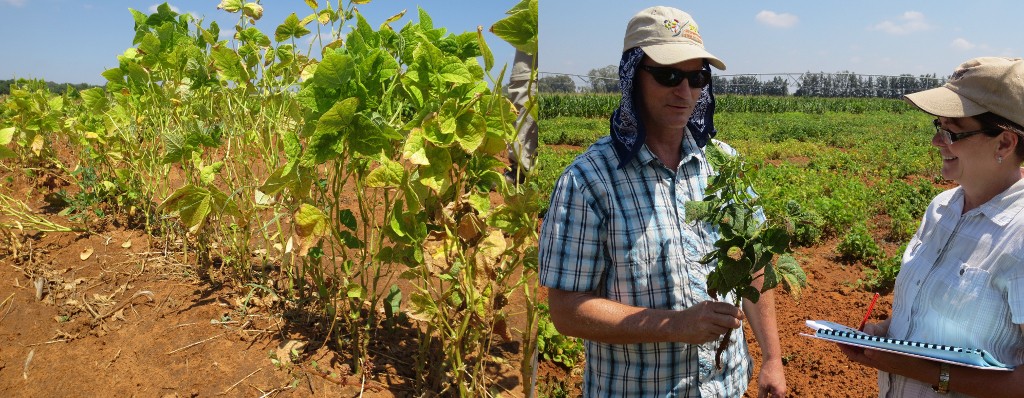At Bunda College, with Dr. James Bokosi, promising breeding lines were selected from 35 PIC (Phaseolus Improvement Cooperative) populations at a field site located at 14⁰11.249 S, 33⁰46.478 E and at an elevation of 1195 masl. Single plant selections from the F4 generation had been completed one year ago in Malawi, resulting in over 400 selections; followed by a generation advance in South Africa with Deidre Fourie (ARC). Dr. Bokosi then selected a subset of approximately 280 lines based on seed type and these were planted at the Bunda and Bwumbe Stations. At Bunda, a high frequency of mosaic and black root symptoms were identified, signaling the presence of bean common mosaic virus. Lines were selected based on yield, plant stand, and disease resistance. Approximately 10-20% of the lines were selected that will then be included in regional trials during the next season.
At Bwumbe Station near Blantyre, the same set of PIC lines were planted in three replications at the Bwumbe Station located at 15⁰55.555 S, 35⁰04.389 E and at 1138 masl. At Bwumbe, charcoal rot (caused by Macrophomina phaseolina) was the major constraint, resulting in reduced plant stands and reduced yield. In addition, wilt likely caused by Fusarium oxysporum, and Angular leaf spot were also found. We noted that distinct selections were completed in Bwumbe in comparison with Bunda, indicating the effectiveness of this approach of selection from a diverse set of populations in each target production environment. Separate trials of selections from the Durango diversity panel (DDP), and an advanced line trial and a national trial both from Malawi, were evaluated. In the process one line was identified from the national trial with impressive yield, architecture, disease resistance, and seed quality traits.
In Vaalharts, South Africa we evaluated high temperature trials with Deidre Fourie at the Jankempdorp ARC Station. The bean trial at the Vaalharts field site is located at 27⁰56.759 S, 24⁰50.548 E and at 1162 masl and covered over 2 hectares with 3 replications of the DDP and ADP and 72 PIC populations. The average temperatures indicate high temperature stress during the daytime, but an ideal night-time temperature regime, that resulted in typical high temperature stress effects, including reproductive organ abscission and pin bean formation. Visual ratings based on pod load (1-9) were completed on the ADP and DDP trials and selections were completed in 72 PIC populations.



